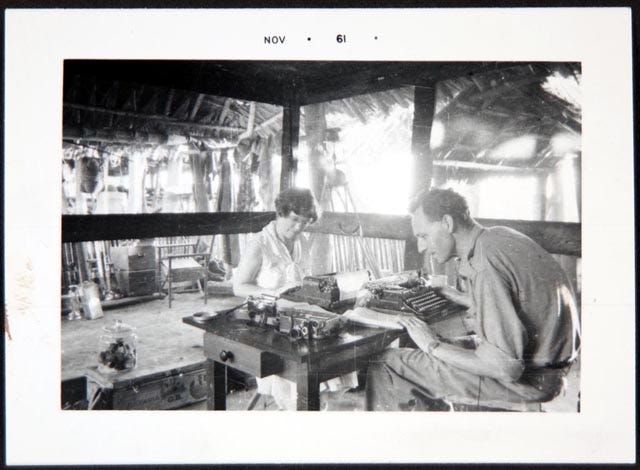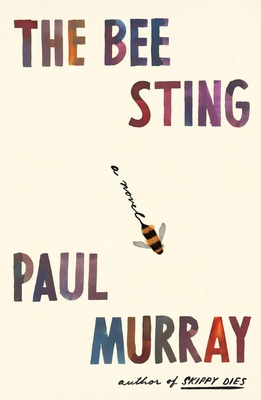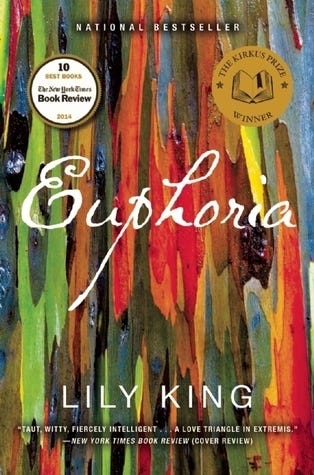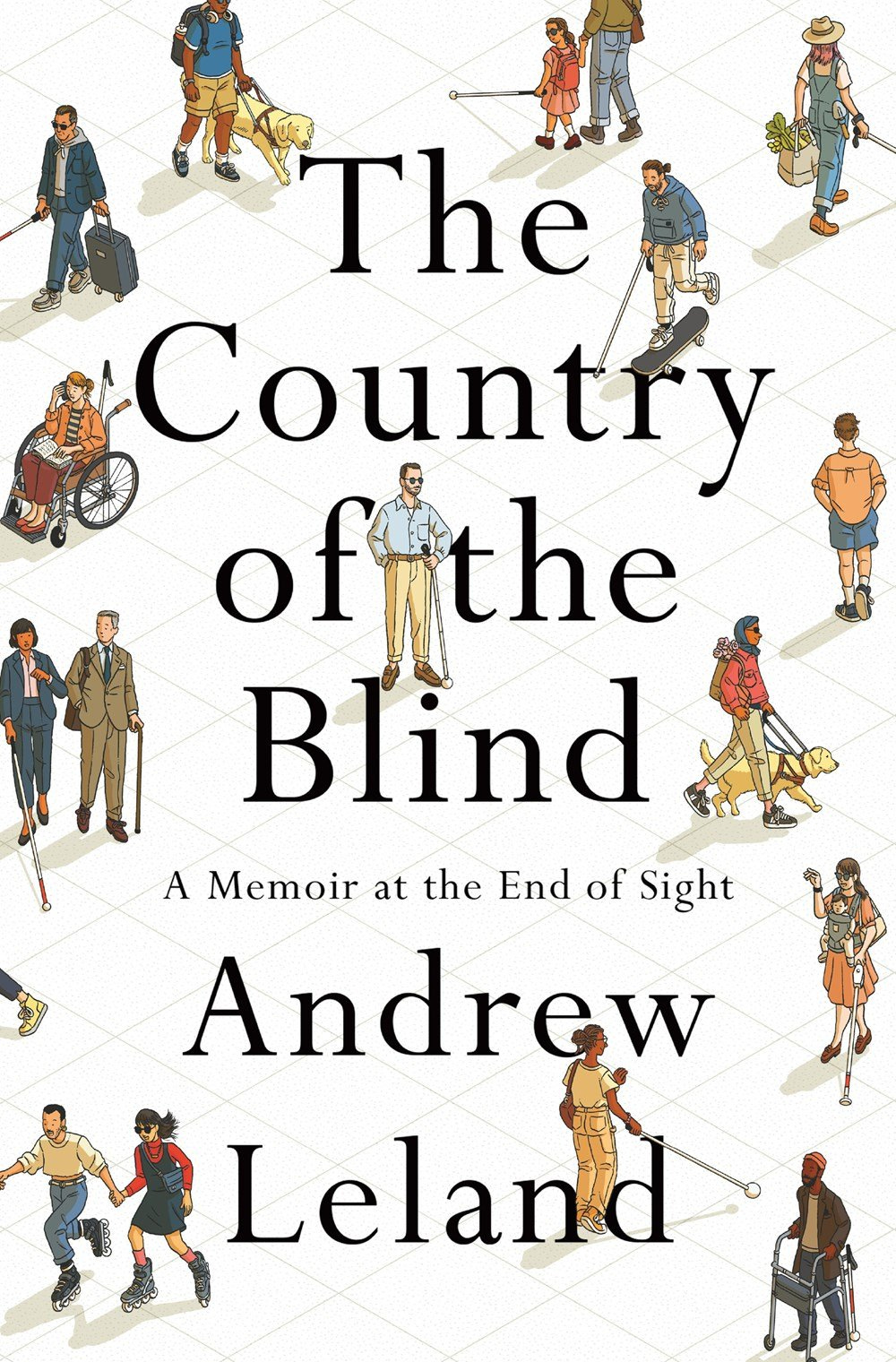Good afternoon — Here is my first roundup of what I read last week!
The Bee Sting by Paul Murray
I’m usually wary of “great novels” (like the “Great American Novel” or the “Great Irish Novel” in this case). They often don’t live up to the hype or just aren’t very fun to read. But I could not put this book down.
The Bee Sting is the rare book that you can’t stop reading but you also want to write an English paper on. It was a 2023 bestseller and was shortlisted for the Booker Prize. The book is set in Ireland in 2014 and centers on the Barneses, a well-off family of four struggling after the 2008 financial crash. It’s darkly funny and full of denial and symbolic/actual deaths.
The Bee Sting is like a modern (and much more readable) The Sound and the Fury by William Faulkner. It focuses on one family and has multiple points of view for each family member. It opens with the perspective of Cass, the teenage daughter, then shifts to her younger brother, PJ, and then to their mother, Imelda, and finally to their father, Dickie. The book starts slow but quickly sucks you in. I couldn’t stop reading it once I got to the mother’s point of view. Because I think it’s best to go in blind plot-wise, I won’t spoil it here. Instead, I’ve included some of my observations in this footnote.1 This book is long (~650 pages), but I didn’t want it to end.
Rating: 5/5
Genres: Contemporary Literary Fiction - Complex Families (Tragicomic)
Audio: The Bee Sting is an Audible exclusive performed by a full cast of Irish actors. The audio is excellent (although it is 26 hours and 10 minutes of content).
My Husband by Maud Ventura, Emma Ramadan (translator)
I binged My Husband in just a few hours. The book is set in France in the summer and takes place over a week. Initially published in France in 2021, My Husband was translated into English last year.
After 15 years of marriage and two kids, our unnamed narrator (the wife) still loves her husband like she’s in the honeymoon phase of an early relationship.
“I love my husband as much as the first day I met him,” she says. “I think of my husband all the time; I wish I could text him all day. I imagine telling him I love him every morning, and I dream of making love to him every night.”
The lead is like an unhinged (modern) French Betty Draper. She sculpts her body with yoga and tennis, buys the right clothes, obsessively highlights her hair to maintain a Hitchcock-icy blonde, and expertly applies makeup—all to impress her husband.
I binged this book in just a few hours (it’s 253 pages). It’s well-written and darkly funny. Some might think the ending is neat, but I loved how it read almost like a thriller. My Husband is being adapted into a TV series.
Rating: 4/5 stars
Genres: Literary Fiction - Messy Women (Crush Psychosis); Fiction in Translation
Movie/TV pairings: Gone Girl; Fatal Attraction; You
Random pairing: a red lipstick.
Food pairing: Clementines. (I love this recipe from the Salad Freak cookbook - Crunchy Citrus and Chicories with Turmeric Tahini Dressing.)
Euphoria by Lily King
This was published in 2014 and topped the bestseller and “Best Books of the Year” lists. It takes place in 1933 in Papua New Guinea.
In 1933, anthropologist Margaret Mead and her second husband, Reo Fortune, collaborated with Gregory Bateson in the Sepik River in Papua New Guinea. Bateson and Mead would later marry. King takes this (real) trip and blends it into a work of historical fiction. American Margaret Mead becomes Nell Stone; New Zealand-born Reo Fortune becomes the Australian Schuyler “Fen” Fenwick; and British Gregory Bateson becomes Andrew Bankson. Nell is already well-known in her field after publishing a bestseller. Her husband, Fen, is jealous of her success. Bankson is depressed and lonely and encourages them to stay on the Sepik River. A tragic love triangle ensues.
I loved this book — the premise, the prose, the setting, the tension of the love triangle, and the characters. I can’t believe I didn’t know about this book until a decade after it was first published. I highly recommend it!
Rating: 4.3/5 stars
Genres: Historical Fiction; Literary Love Triangles
Movie/TV pairings: The Lost City of Z (also a great book)
Audio: Would work on audio (about 7 hours long).
The Country of the Blind: A Memoir at the End of Sight by Andrew Leland
The Country of the Blind was a finalist for a Pulitzer Prize and was a New Yorker best book of 2023.
In The Country of the Blind, Andrew Leland recounts his slow progression from sight to blindness while also examining the history and culture of blindness. (Leland has a degenerative eye disease called retinitis pigmentosa that slowly leads to blindness.) Leland’s reflections on his relationship to his vision were moving, and his investigation of blind history was fascinating. (For instance, the first LP records weren’t for music - they were made for audiobooks for the blind.) Definitely worth a read.
Rating: 4.3/5 stars
Genres: Nonfiction - Memoir
Audio: Would work on audio (just under 8 hours).
An article that my friends and I couldn’t stop talking about:
The Times article on Ballerina Farm: Hannah Neeleman is a former Juilliard-educated ballerina who lives on a farm in Utah with her husband, David Neeleman (the son of billionaire Gary Neeleman), and their eight children. Hannah Neeleman is a “trad wife,” which the article explains:
Trad wives are an internet phenomenon; women who have rejected modern gender roles for the more traditional existence of wife, mother and homemaker — and who then promote that life online, some to millions of followers. Their lifestyle is often, though not always, bound to Christianity. They film themselves cooking mad things from scratch (chewing gum from corn syrup, waffles from a sourdough starter), their faces glowing in beams of sunlight, their voices soft and breathy, their children free range.
In order to explain trad wives — and their popularity — we need to look back 15 years or so, when the fourth wave of feminism was breaking. This was the “girl boss” era, when women were told to be bolder in the workplace, to lean in further, to break glass ceilings. The poster woman for the movement at the time was the Facebook boss Sheryl Sandberg. But as the years went on women realised they’d been sold a lie: this individualistic feminism didn’t resolve anything unless you were a millionaire. For normal working mothers the girl-boss era achieved virtually nothing.”
SPOILERS FOR THE BEE STING BELOW!!!!
/
/
/
/
/
/
/
/
/
/
Below is my spoiler-y discussion of The Bee Sting.
To clarify a few plot points: As PJ notes when discussing Stephen King’s Pet Sematary, “When things come back, very often they come back different.” Nothing is what it seems in this novel. The eponymous bee sting was not a bee that got trapped behind Imelda Caffrey’s wedding veil. To Cass, Imelda’s refusal to remove her veil was a sign of her vanity.
However, as the novel unfolds, we learn the real story: Imelda fell in love with Frank Barnes, the handsome star of the football team and the son of the town’s wealthiest man. The two got engaged, but then Frank died in a car accident. Out of grief, Imelda and Frank’s brother, Dickie, got engaged. Imelda believed that Frank’s ghost would appear on her wedding day, but the ghost she saw on her wedding day was her veiled reflection. Her swollen face on her wedding day was the result of her father, Paddy Joe, hitting her.
Additionally, Dickie’s college bus accident was not a bus accident. A closeted police officer in Dublin beat Dickie after the two slept together. After Frank’s death, Dickie agreed to marry Imelda out of the guilt of outliving his brother, even though he was in love with another man, Willie. Near the end of The Bee Sting, Dickie has an affair with Ryzard, who works at Dickie’s car shop. Ryzard is also the stranger who lives in his car that Cass and Elaine meet in the bar. Cass and Elaine show Ryzard the bunker. Ryzard eventually blackmails Dickie, and Dickie is trying to kill Ryzard in the woods at the end of the book to stop his secret from coming out.
What happened at the end?: At the end of The Bee Sting, Dickie is with Victor in the bunker during a torrential downpour. The two are trying to shoot Ryszard but are disoriented in the storm. Dickie tells Victor he’s worried that they might shoot a red squirrel with their Infared guns accidentally (throughout the book, they kill grey squirrels but spare the red squirrels). Victor replies, “There are no red squirrels.”
Imelda, Cass, and PJ are all going to the bunker. Imelda is by herself, and Cass and PJ are together. Cass has just saved PJ from a pedophile in Dublin, and they traveled home to see their family. They are walking through the woods with their flashlights. Cass calls out “grey squirrel,” saying, “grey squirrel you cry and grab your brother’s hand.”
Many people seem to think the ending is ambiguous, but Paul Murray has said, “to me it’s very clear what happens at the end.” I also think the ending is clear: Dickie kills Cass and PJ and then himself. This ending is heavily foreshadowed at a few different points in the book:
The first sentence of the book states: “In the next town over, a man had killed his family . . . what kind of a man could do such a thing, about the secrets he must have had. Rumours swirled about affairs, addiction, hidden files on his computer.”
Victor also tells Dickie that the only way his children are guaranteed not to discover their dad’s secret is to kill them.
On Imelda’s wedding day, Paddy Joe curses her and tells her that her life will end badly and she will lose everything—her house, her land, and the child (Cass) that she is carrying.
Dickie shooting his family and then himself mirrors the bee sting. Murray describes the bee sting as its last suicidal effort to defend itself and its colony. The bee is disoriented and has no reference points. Dickie is the bee. He can’t see in the storm and is desperate to save his family.
Rose predicted this, like she predicted Frank’s death. In the nursing home, Rose tells Imelda, “Dickie died in a wood.” Imelda thinks Rose is mistaking Dickie with Frank, but Frank didn’t die in the woods—he died in a field. Rose also says “those poor little skirls” (referring to squirrels). She is referring to Cass and PJ, who call themselves red and grey squirrels. At the end, both Cass and PJ are shot—they are both “grey squirrels.” (Remember Victor tells Dickie, “There are no red squirrels.”)
Personally, I think it’s possible to interpret the ending as Imelda surviving the shooting. Paddy Joe cursed Imelda, telling her she would lose everything. Dickie, her children, Big Mile are all dead, and she’s lost her material possessions. To me, Imelda is like the traveler in the hillside. The traveler spends one night with the fairy people and wakes up a century later. Imelda goes to the Barnes family and loses everything.
Themes and symbolism: There are a lot of themes and symbols in The Bee Sting. I’m just going to write about a few below.
Fairy tales: Murray plays with fairy tales and stories throughout the book. Imelda’s father, Paddy Joe, is “like something from a fairy tale, the terrifying giant with a ravishing daughter, his monstrousness in direct proportion to her beauty.” Cass and PJ are like Hansel and Gretel walking through the woods at the end of the book. Imelda is like the traveler in the hillside with the fairy people. Rose is like a witch who lives apart from society.
Inherited trauma/repeating the past: Cass and PJ mirror their parents’ storylines. Are they doomed to live out their parents’ mistakes? Cass could be like Dickie, never being with the partner she wants or being open about her sexuality. PJ could be like Imelda, stuck in a relationship with someone who isn’t who he appears to be (his video game friend).
The bee sting: As I explained above, Dickie is like the bee. He builds the bunker to protect his family but ends up killing them. At the end, the Barnes family members are trying to make it to the colony (aka the bunker).
The black dog: Characters see a black dog, indicating something terrible will happen. Murray likens Dickie to a dog when he is holding the gun: “But the gun wants to shoot. You can feel it straining against your fingers, like a dog tugging at its lead.” Dickie is the black dog, the bringer of death.
Empathy and love (when should we care about others’ problems and suffering?): Willie quotes W.H. Auden to Dickie: “We must love one another or die.” Miscommunication, misperceptions, and repression obstruct the relationships amongst the Barnes family members. At the end of the book, Cass, PJ, and Imelda choose familial love and are trying to make their way back to their bunker, but it might all be too late. Murray also plays with this idea through the narrative structure—he switches from first person to second at the end. I loved this observation in this Reddit subthread:
The environment: A clear theme is environmental degradation. At one point, Murray writes about how bees can’t find their way back to their colonies because of pesticides. Like the bees, Dickie’s family can’t find their way back to each other. One interpretation of not caring about the “next town over” is not caring about protecting the environment until it is too late and it affects your environment.








